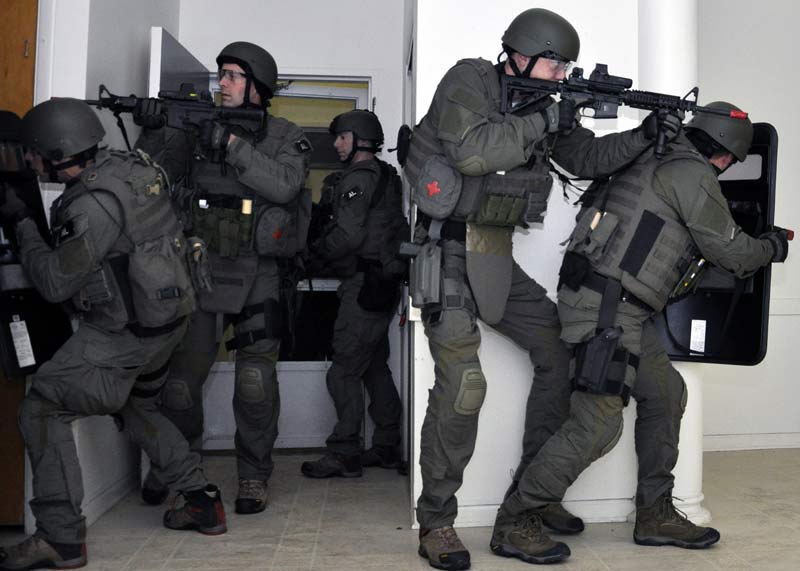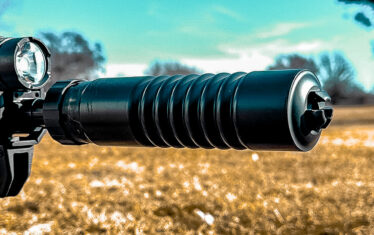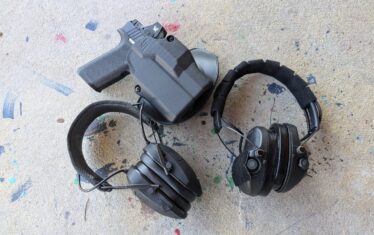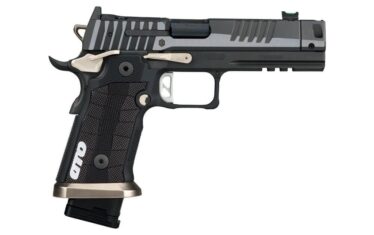The Federal Bureau of Investigations (FBI) isn’t as some might come to believe a “spy agency,” although it is part of the U.S. Intelligence Community. It serves as the domestic intelligence and security service of the United States. It is also the principal federal law enforcement agency within the United States Department of Justice and reports to the Attorney General and the Director of National Intelligence.
Today, the FBI maintains 56 field offices in major U.S. cities and more than 400 resident agencies nationwide.
Yet, what is noteworthy is that before 1908, the DoJ had no organized force of investigators. Instead, the DoJ had to rely on detectives hired from the Secret Service and even private detectives. As the country grew in size, so too did the need for more investigators. It was in 1908 that the Bureau of Investigation (BOI) recruited 34 individuals including veterans of the Secret Service.
The BOI grew in size and took on a greater role, becoming an independent service within the Department of Justice in 1935, and was rechristened as the Federal Bureau of Investigations.
Lock and Load: Not Quite
Thanks to movies and TV shows, there is a misconception that the agents working for the BOI in the “Roaring 20s” carried Thompson submachine guns. Yet, that wasn’t actually the case. In fact, it was the Postal Inspection Service that became the first law enforcement agency to purchase the Thompson submachine gun.
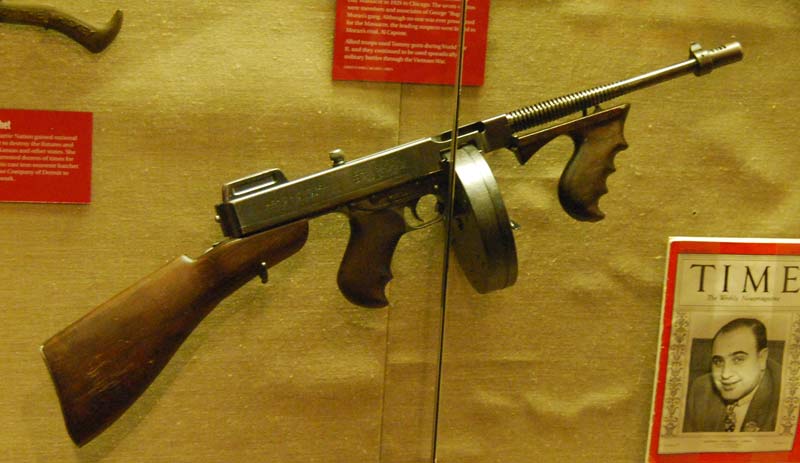
The reason was that the DoJ was investigating crimes, not battling criminals in the streets. It wasn’t even until 1934 that agents were officially armed. Before that point, agents could carry firearms the same as any American civilian — and that meant if there were jurisdictions in place, the agents had to obtain commissions from local sheriffs and chiefs of police!
That fact has also led to a misconception that agents weren’t armed.
That appears not to be the case. BOI agents did carry firearms but had to abide by certain rules including that they carried firearms for defensive purposes and that it be authorized by the special agent in charge. It must be added that no formal shooting qualifications existed, and agents had to purchase their own ammunition for training — limited that it was.
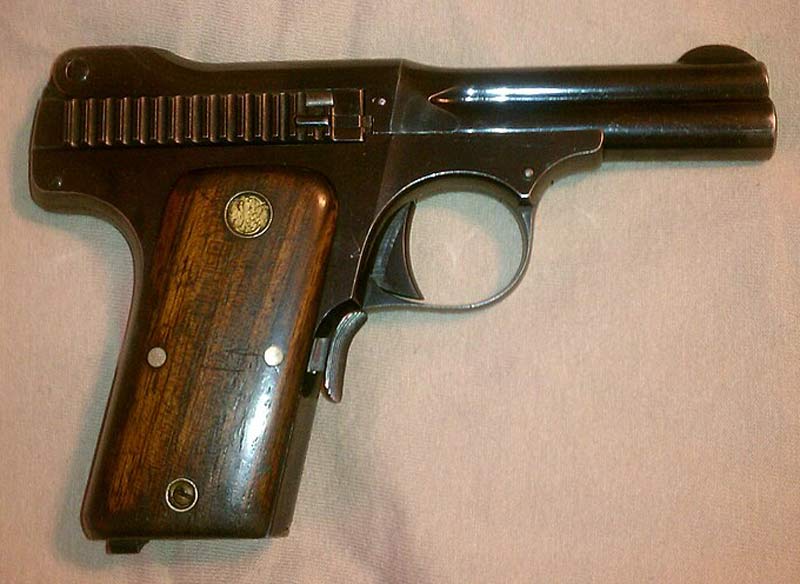
Most notably, there were no standard-issued firearms during the BOI era, but by most accounts, agents followed what the police of the day carried. The Smith & Wesson Model 1913, chambered for .35 caliber, was a popular firearm with BOI agents. The first semi-automatic pistol introduced by Smith & Wesson was compact and affordable and it got the job done.
Also popular was the John Browning-designed Colt Model 1911, aka Colt Government. It had been adopted by the United States military before the First World War. Afterward, Colt continued to seek civilian and law enforcement buyers.
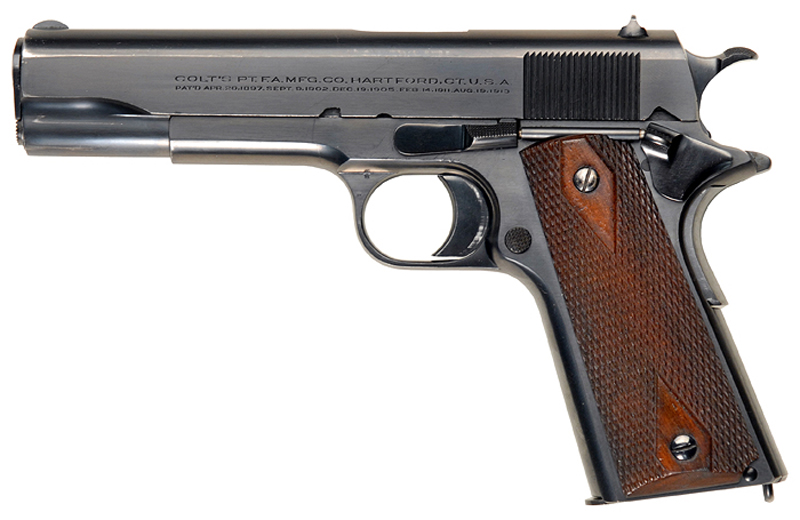
Revolvers were still very much in favor with law enforcement, arguably a holdover from the lawman days of the frontier. The Smith & Wesson Military & Police — now produced as the S&W Model 10 — was carried by many BOI agents. The six-shot, .38 Special double-action revolver went on to become the standard issue police sidearm for more than 70 years.

Official Firearms Introduced
In 1934, the soon-to-be FBI first issued firearms to its agents, and those individuals were handed a Colt Official Police revolver 4-inch barrel, chambered in .38 Special. The medium frame, double action, six-round revolver had been introduced in 1927 and was marketed to law enforcement to compete with the Smith & Wesson Military & Police — and both revolvers were offered with a variety of barrel lengths.
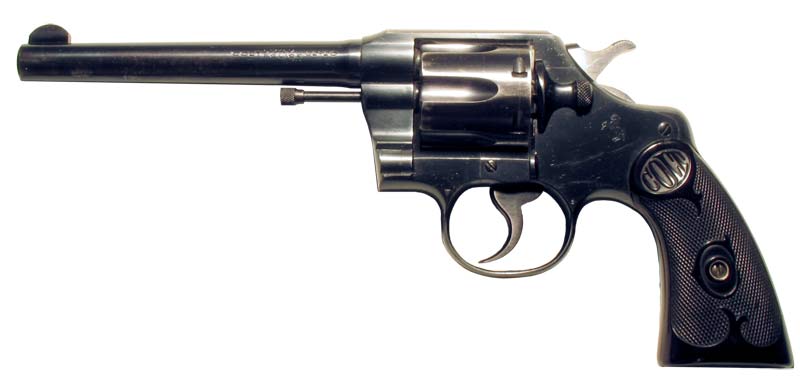
Though the Colt Official Police was the standard issue firearm, agents were still allowed to carry their personal handguns should they have chosen to do so. How many did is a matter of speculation, as agents had to pay for non-issued firearms out of their own pockets.
The decision to officially arm agents came as the result of the Kansas City Massacre, which occurred on June 17, 1933, when a group of gang members attacked several law enforcement officers at the train station in Kansas City, Missouri. The shootout began when a gang led by Vernon C. “Verne” Miller set out to free Frank “Jelly” Nash, while Jelly was in the custody of several law enforcement officers returning him to the U.S. Penitentiary at Leavenworth, Kansas, from which he had escaped three years earlier.
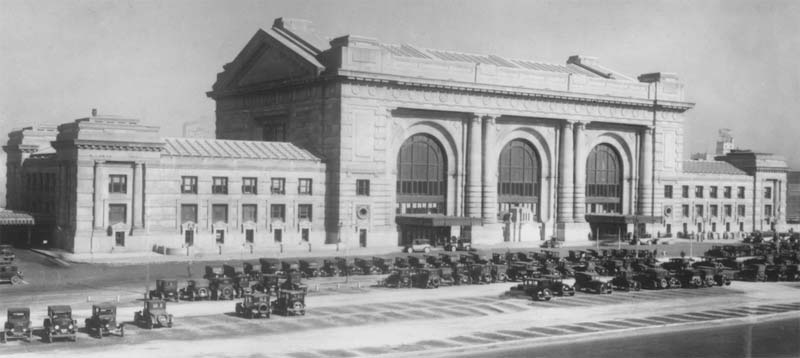
Though the gunfight lasted just 30 seconds, four police officers were killed, along with one gang member. The FBI wasn’t involved in the prisoner transfer, but it rattled the Bureau enough that Director J. Edgar Hoover called for agents to be able to protect themselves.
Legislation was passed in 1934 that expanded agent’s ability to carry firearms, and that included exempting them from laws placed by states on citizens, while it also authorized agents to make formal arrests. Perhaps seeing that changes were needed, the BOI had begun to purchase firearms for its agents, and that further increased with the FBI — which soon acquired Thompson SMGs and Winchester Model 1907 self-loading rifles, later adopting a specially modified version of the Remington Model 81.
The FBI also purchased a significant number of Smith & Wesson Registered Magnum revolvers (now in production as the Model 27). The N-frame revolvers were chambered for the then-new .357 Magnum, which the Bureau chose specifically for its ability to penetrate steel-plate vests and car bodies — necessary due to the wave of bank robberies including those committed by the infamous Bonnie & Clyde.
A variety of other handguns, many compact in size were also selected for those agents who needed concealability. These included such firearms as the Colt Detective Special and Pocket Positive, as well as the S&W Model 49 “Bodyguard” and Model 60 “Chief’s Special,” although plenty of other options were taken by agents.
As agents were now formally issued firearms, they were required to train and meet shooting requirements. Agents had to qualify for any firearm that was carried as a duty gun, whether provided by the Bureau or personally owned. Initially, the training took place a military bases around the nation’s capital, but as that became difficult to accommodate, the FBI worked with the United States Marine Corps to allow the Quantico military base to be used for training.
Few changes came during and immediately after the Second World War. But in the 1950s, the Bureau acquired a large number of Smith & Wesson Model 19 “Combat Magnums” from the United States Navy’s Office of Naval Investigations. These were outfitted with 4-inch barrels and round butts. It began a trend toward large-frame handguns that continued until the 1970s.
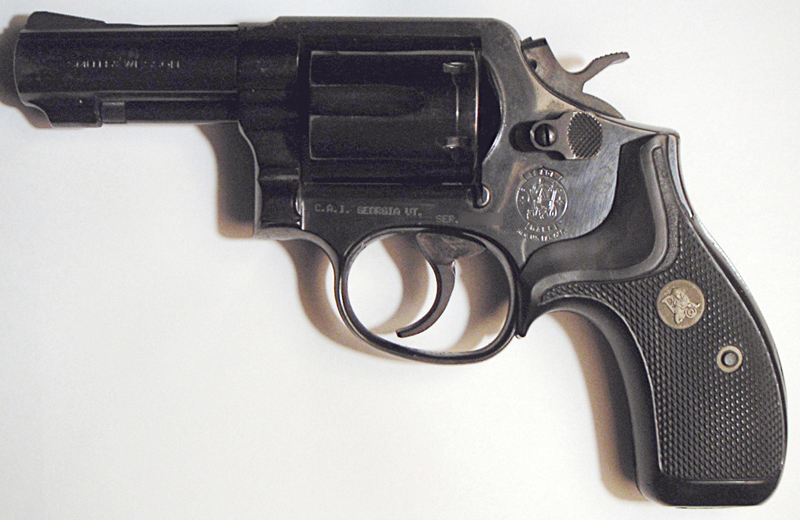
The Bureau looked to the Smith & Wesson Model 10-6, chambered in .38 Special with a 2.5-inch barrel, but it proved unpopular with agents. However, from that misstep, the FBI found success with the S&W Model 13, a K-frame double-action revolver, chambered in .357 Magnum. Its big selling point was the fact that .38 Special could be safely fired from a .357 revolver but had the option for the standard .357 Magnum round, the Winchester 145-grain Silvertip.
Semi-Autos Take Over
Though the BOI had been seen agents carrying semi-autos since its earliest days, the FBI’s official arsenal of handguns had largely contained revolvers. That finally began to change in the 1970s.
The first officially adopted semi-auto was the S&W Model 459, which was issued initially to hostage rescue teams (HRT). It was noted for being highly accurate, and it was reportedly used against potential adversaries.
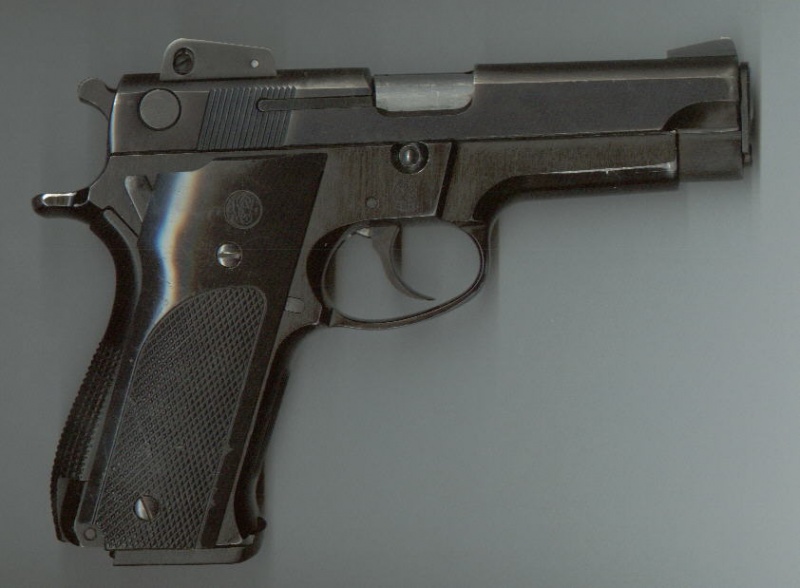
But it lost favor on April 11, 186, when eight FBI agents exchanged gunfire in the now infamous “Miami Shootout.” The agents had attempted to apprehend William Russell Matix and Michael Lee Platt, who were suspected of committing a series of violent crimes in and around the Miami metropolitan area. Though the agents had surrounded the suspects, a gunfight ensued and the agents found themselves outmatched. Two agents were killed, while five more were wounded. Both robbers were also killed, but one took six shots while the other was hit a dozen times.
The incident — one of the most violent in the history of the FBI — is still studied in law enforcement training, while the scale of the event led to calls for more effective handguns to be issued to FBI field agents and law enforcement across the country.
As a stopgap measure, deeper-penetrating ammunition, the Winchester 147-grain subsonic was introduced while the FBI explored options.
Enter the 10mm
The other lasting legacy of the 1986 FBI Miami shootout was the brief adoption of the 10mm Auto round (10x25mm). It was an attempt to provide agents with a more efficient caliber after the Bureau evaluated the 9mm and .45 ACP cartridges. A decision was made to go with a .40 caliber round, but 10mm was the one available at the time.
As a highly pressurized round, it was beyond what the average agent was used to firing. It was also only available in just two large-frame pistols at the time. Yet, the FBI adopted a downloaded 10mm and the S&W Model 1076 with a 4.25-inch barrel. That firearm was considered too bulky and was relegated to HRT personnel.
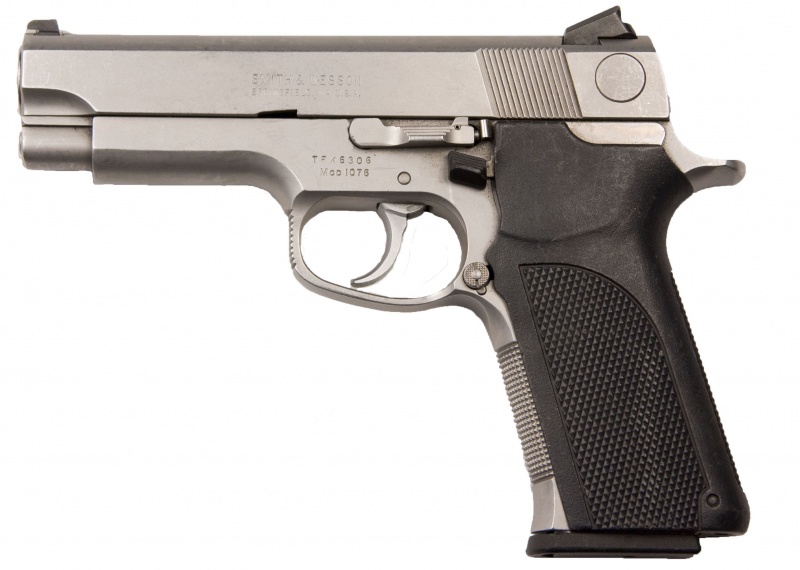
As a result, the Bureau transitioned to the SIG Sauer P226, chambered in 9x19mm Parabellum — first for field SWAT teams and later for general use. It was compact in size, lightweight, and reliable. At the same time, the HRT adopted the Browning Hi-Power for a while, while those were later replaced by .45 ACP single-action pistols, including models produced by Les Baer and later by the Springfield Armory’s “Bureau Model.”
Then in the 1990s, S&W working with Winchester developed the .40 S&W, which offered similar ballistics of the 10mm but in shorter cases comparable to 9mm. In addition to the release of the S&W Model 4006, Glock released its full-size G22 and compact G23 — both chambered for .40 S&W.
It was then a decade ago that the Bureau decided to go back to 9mm, awarding a 2016 contract to Glock for the G17M, an upgraded version of the venerable Glock 17.
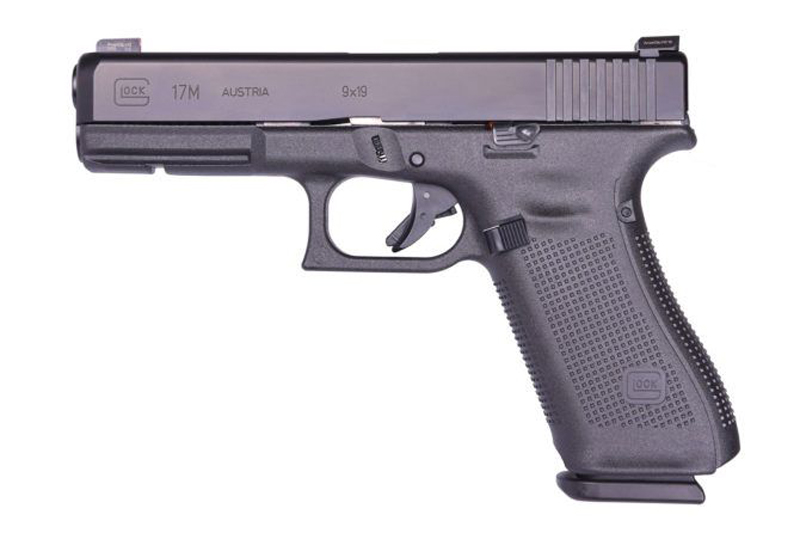
Today, the FBI doesn’t specify exactly what firearms are favored but on its website noted, “Agents carry Bureau-issued or approved handguns and may be issued additional equipment as needed. Those in specialized areas like the Hostage Rescue Teams may also be issued weapons that fit their duties. Agents are allowed to carry personal weapons, provided they do not violate the policies regarding firearms. Unless otherwise instructed, agents are required to be armed at all times.”
